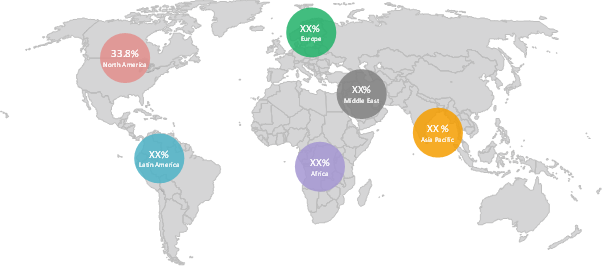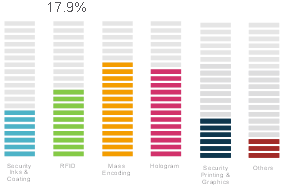Definition of Market/Industry:
Anti-counterfeit pharmaceutical packaging is an approach of preventing false presentation of pharmaceutical drugs in terms of label and its identity. Anti-counterfeit pharmaceutical packaging helps in maintaining the identity of the original product throughout the process. Anti-counterfeit packaging assures that the packaging code applied by original manufacturer is not changed and the pharmaceutical product is not counterfeiting.
Statistics:
The global Anti-counterfeit pharmaceutical packaging market accounts for 2450.4 Million Units in terms of volume in 2018 and is estimated to grow with a CAGR of 12.7% during 2019 to 2027.
Drivers:
The growth of the anti-counterfeit pharmaceutical packaging can be attributed to the rising need for safe pharmaceutical drug packaging owing to growing number of counterfeit products, which can affect both the reputation of pharma companies as well as the health of the patients. According to the World Health Organization, 1 in 10 medical products in developing countries is falsified or substandard. The personal and public health tolls are huge, as is the economic burden - up to $200 billion annually.
Increasing implementation of policy and regulations for anti-counterfeiting packaging to avoid the tampering or the counterfeiting of packaged original and branded drugs is projected to foster the market growth of anti-counterfeit pharmaceutical packaging. On March 21, 2016, FDA issued more than 1,300 letters to medical practices in the United States that purchased unapproved prescription drugs and/or injectable devices from TC Medical, an unlicensed supplier that distributed counterfeit Botox found in the United States.
Statistics:
North America region dominated the global anti-counterfeit pharmaceutical packaging market in 2014, accounting for 33.8% share in terms of volume, followed by Europe and Asia Pacific, respectively.
Figure 1. Global Anti-Counterfeit Pharmaceutical Packaging Market Share, By Region, 2018

To learn more about this report, Request sample copy
Market Restraints
The implementation of anti-counterfeiting technology is expensive, due to which the small manufacturers ignore the safety of the drug. This is expected to hamper the market growth of the anti-counterfeit pharmaceutical packaging.
The increase in number of instances where the patients do not consult doctor before purchase of medicines is directly promoting counterfeit drugs. According to the American Society for Microbiology, five percent of adults from a cohort of 400 people reported using antibiotics without a prescription during the previous 12 months. This is likely to adversely impact the market growth.
Market Opportunities
Growing demand for high-value life-saving drugs is expected to promote the counterfeit market, which in turn opens the opportunity for anti-counterfeit techniques for life-saving drugs. Therefore, the rising demand for life-saving drugs is expected to fuel the market growth of anti-counterfeit pharmaceutical packaging. It is estimated that 342 people die every day in North America due to poor life-saving medication adherence.
Asia Pacific region is expected to show lucrative growth opportunities for the anti-counterfeit pharmaceutical packaging market due to the booming pharmaceutical industry and less government policies, which allows the drug stores to sell pharmaceuticals without registration. According to the Pharmaceutical Security Institute, Asia accounts for the largest share of counterfeit drugs in the world. Furthermore, China and India are the biggest drug manufacturers, so counterfeit drugs could potentially cause problems for this populous region.
Figure 2. Global Anti-Counterfeit Pharmaceutical Packaging Market- Opportunity Analysis

To learn more about this report, Request sample copy
Market Trends/Key Takeaways
The market is expected to gain traction over the forecast period owing to the increase in implementation of electronic track and trace system over the supply chain. The pharmaceuticals are being tracked from the supply of the drug from manufacturer to end-user, which verifies the authenticity of the drug at every stage of the supply chain.
Growing implementation of covert & overt features that offer authenticated packaging by using advanced technology such as visual representation and other sophisticated devices which is difficult to copy without a particular detection device. This technology offers a high level of safety and security to the product such as security at tear tape and design tape. Therefore, the growing adoption of such covert & overt technology is expected to offer new growth opportunities to the market.
Statistics:
For any segment information:
On the basis of technology, mass encoding technology held the largest market share and was valued at 774.5 million units in 2018.
Figure 3. Global Anti-Counterfeit Pharmaceutical Packaging Market Share, By Technology, 2018

To learn more about this report, Request sample copy
Competitive Section:
Company Profiles:
3M Track and Trace Solutions, Avery Dennison Corporation, Alien Technology, Authentix, Inc., CFC International, Inc., Digimarc Corporation, Impinj, Inc., Sicpa Holding, ATL Security Label Systems, and Applied DNA Sciences
Few Recent Developments
Share
Share
Missing comfort of reading report in your local language? Find your preferred language :
Transform your Strategy with Exclusive Trending Reports :
Select a License Type
Credibility and Certifications

860519526

9001:2015
27001:2022


Joining thousands of companies around the world committed to making the Excellent Business Solutions.
View All Our Clients
US Reciprocal Tax Impact Analysis On Anti-counterfeit Pharmaceutical Packaging Market
Stay updated on tariff changes with expert insights and timely information